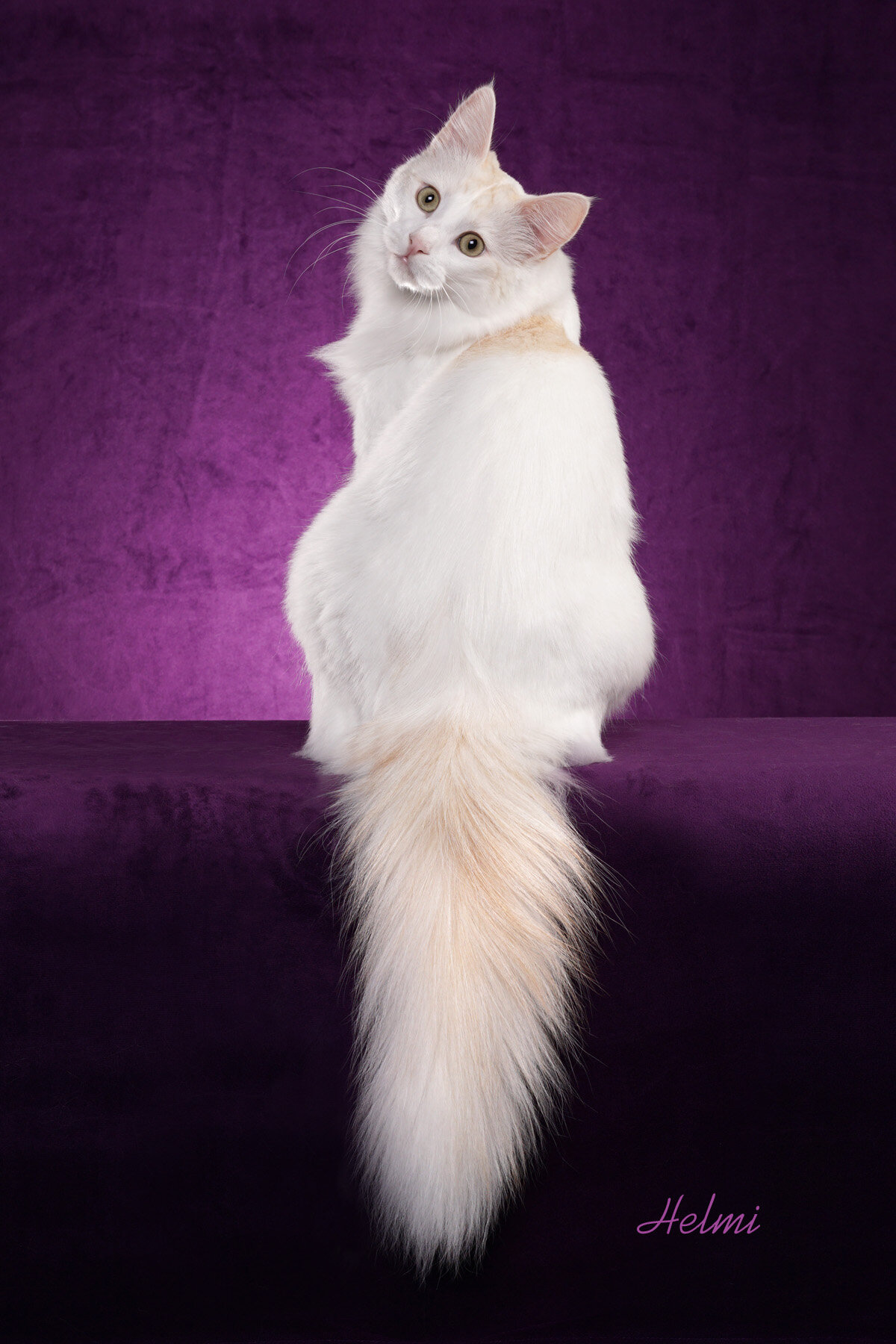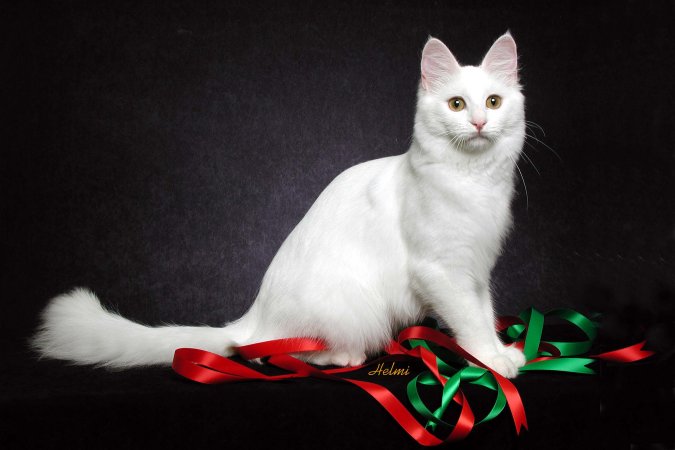
I use the CFA Turkish Angora breed standard as my guide in writing this summary. I also use my own words, which are less formal and I don’t make an attempt to cover the entire standard as this is meant to be an overview of the cat and how she should look when looked at critically. Please remember that these cats are as per the CFA breed standard. The ‘true’ or ‘original’ Turkish Angora is a different cat altogether and is found in Ankara Zoo, Turkey! They look like white traditional Persians. The American cat associations changed the appearance through their breed standard.

I said that this cat is intelligent and ‘elegant’ on another page of this website on the breed. The standard reflects this by stating that members of this breed should be “graceful” and the body should be “firm” “long” and “muscular” and “lithe”. I think you would agree that the body is the opposite almost to cobby. It is fine and perhaps a little rangy in comparison to the mixed-breed cats.

The head should be “small to medium”. This, it seems, serves to enhance the sense of elegance. The nose meets the forehead without a break. This is evident in all the cats on this page.
All the images below are copyright Helmi Flick.

The color of the eyes of the Turkish Angora should be: odd-eyes (copper/blue), copper, gold, yellow, hazel, green, aqua and blue (Legacy of the Cat page 173).
The tail should be “long and tapered”, with a “full brush”. Yes, the cat heading the page passes this standard.
As you read through the breed standard at every stage one sees criteria that drives breeders to create or maintain what is thought to be the ideal look for this cat, namely elegance and a rather slim, light, conformation. For, example, the neck should be “slim” and “rather long”. The legs should be long and the paws “dainty”.
The cat would be disqualified in competition if they were a cobby type. There is a very wide range of acceptable coat colors and I’ll refer you to the CFA page for that. The coat is a “single coat” meaning no undercoat, which allows the hairs to lie smoothly and close to the body (it should be silky). I think this is very apparent in the photograph of Nightingale particularly, where it seems that the hair is almost swept back.
Click the link below for a page on the ‘real Turkish Angora.
